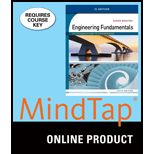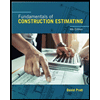
Concept explainers
Convert the systolic/diastolic of 115/85 mm of Hg into Pa, psi and
Answer to Problem 21P
The systolic pressure from 115
The diastolic pressure from 85
Explanation of Solution
Given data:
A systolic pressure is 115
A diastolic pressure is 85
Formula used:
Formula to determine the gauge pressure is,
Here,
g is the gravitational constant.
h is the height of the fluid column.
Calculation:
Case 1:
Conversion for 115 mm Hg to Pa:
Conversion for 115 mm Hg to psi:
1 mm of Hg is equal to 0.0193368 psi. Therefore,
Conversion for 115 mm Hg to inch of water:
Substitute
Reduce the equation as follows,
Converting the height of fluid column
Case 2:
Conversion for 85 mm Hg to Pa:
Conversion for 85 mm Hg to psi:
1 mm of Hg is equal to 0.0193368 psi. Therefore,
Conversion for 85 mm Hg to inch of water:
Substitute
Reduce the equation as follows,
Converting the height of fluid column
Conclusion:
Hence, the conversion for systolic/diastolic of 115/85 mm Hg is explained.
Want to see more full solutions like this?
Chapter 10 Solutions
MindTap Engineering, 2 terms (12 months) Printed Access Card for Moaveni's Engineering Fundamentals, SI Edition, 5th
- 2: Determine the vertical displacement, in millimeters, at H for the following truss. Assume A = 400 mm2 and E = 200,000 MPa for each member. A 5 kN B 5 kN 5 kN D I H G 2 m 2 m 2 m 2 m 1.0 m 1.0 m Earrow_forward1: Determine the vertical deflection at joint E and the horizontal displacement at joint C for the following truss. Assume Area = 400 mm2 and E = 200000 MPa 30 m B с 30 kN A E D 25, KN -5 m- -5 m- -5 m- -5 m- -20 m-arrow_forwardA cantilever beam ABC is loaded as shown in Figure 1. A is a fixed support. Assume E= 200 GPa and I = 200 x 10^6 mm^4. (a) Using the moment area method, determine the slope at B. (b) Using the conjugate beam method, determine the vertical deflection at B. (c) Using the virtual work method, determine the vertical deflection at C.arrow_forward
- Compute for the stresses (initial, const and final stage) and check for compliance in NSCP provisions. Also compute the following: 1. Compute and check if the section is Uncracked, Transition or Cracked as per NSCP. 2. Compute for its flexural capacity and check if it could carry the given load. BEAM SECTION NOT TO SCALE 1400mm 300 $1098 400 */ 400*300* 300 200 300 100 ORIGINAL SECTION/PRECA CAST-IN-PLACE (CIP) PART PRECAST LOADING AT SERVICE M • 21 KN (DEAD LOAD ONLY) 21KN 4.75m 9.25m CIVEN DATA STRANDS: 12-02 AT 120KN/STRAND (GOMM FROM BOTTOM) 8-2 AT 120HN/STRAND (120mm FROM BOTTOM) fc 42.5 MPa (BEAM) fc 38 MPa (CIP) f'a = 80% or fa fp-1860 MPa ESTRANDS 1976Pa OONG 23.6/m³ LOES 1-8% Loss 18% APPLY 3M LIVE LOAD AT CONST. PHASEarrow_forwardPlease explain all your steps. Thank you.arrow_forward10000 Quizl:Design a grit chamber for a horizontal velocity 250 mm/s, minimum flow 5,000 m³/day, maximum 20,000 m³/day, average flow is 12,500m³/day, S.O.R= 0.017 m/s, For a parabolic channels A =2/3 WD, detention time = 1 min Q Ac == HxW vs for inorganic particles = SOR As = LxW As V=Qxt=LxWxH Z=CxW2 Q (m³/day) | Ac (m²) W (m) | Z (m)arrow_forward
- Can you please explain how to draw the shear and moment diagrams. Thank you.arrow_forwardQ2: Design an activated sludge process to treat a waste flow of 15000 m³/day with a BODs of 180 mg/L following primary treatment. The effluent BOD, and SS are to be 20 m mg/L. Assume Xr = 15000 mg/L, X = 2500 mg/L, 0c = 10 day, Y = 0.60, kd=0.05. Determine 1- the reactor volume, 2- the Sludge production rate, 3- the circulation rate, 4- the hydraulic retention time, and 5- the oxygen required? C₁-Ce C 1 XV = 1 +0.532 QxC₁₂ VXF F= - 1+r (1+0.1r)² = Qr= dt Өс Qx Xr-X V R = [= Q YQ(So-S) Oc dx XV 1+Kd0c O₂demand =1.47 (So-S)Q-[1.14Xr(Qw)] Qw total sludge production/X, S = BOD, effluent - 0.63 * SS Warrow_forwardمارت حولة ملانول 60 Design Deceleration tank and screen for W.W.T.P of flow-144000 m² day Design Data: D.T=1-3 min 1-3b, d=1-1.5 m 60 Design Data: velocity= 0.6: 1.5 m/sec . A-Qdfv=b.d, b=2d 233 Design Data: bars used circular of p= 1.5:3 cm. rec. of (1:2 cm) x (2:6 cm) spacing between bars 2.5:5.0 cm fine screen, 2.5 7.5 cm coarse screen Sloping angle on hz (6)=45:60 = depth of water depth in approaching channel=d = ⚫nbars nspacings +1 ⚫b=nbars xo+nspacings I spacing net inclined area = 2 Aapproach channel=nspacing. spacing. L. 1=d/ sin Check: = 1.13 C 2.56 1134(6.05 P. 45.30 *velocity just befor the screen=v₁ = Qa(m³/sec) screen-b.d ≥ 0.6 m/sec. * velocity through the screen=v2 16mm use 2 Qa(m³/sec) nscreens (spacings Spacing).d ≤1.5 m/sec IsP. 22-65 12²² head losses = Ah = 1.4 x ≤0.1 m 2g bav usp = Ubar Q 23.65 k 148.72arrow_forward
 Engineering Fundamentals: An Introduction to Engi...Civil EngineeringISBN:9781305084766Author:Saeed MoaveniPublisher:Cengage Learning
Engineering Fundamentals: An Introduction to Engi...Civil EngineeringISBN:9781305084766Author:Saeed MoaveniPublisher:Cengage Learning Fundamentals Of Construction EstimatingCivil EngineeringISBN:9781337399395Author:Pratt, David J.Publisher:Cengage,
Fundamentals Of Construction EstimatingCivil EngineeringISBN:9781337399395Author:Pratt, David J.Publisher:Cengage,

